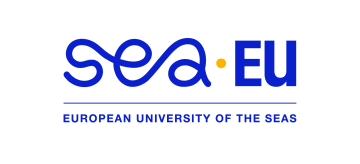He graduated from University of Gdansk in 1985, received PhD in medical biology (1999) at Medical University of Gdansk and habilitation in biological sciences (2006). He carried out postdoctoral work at University of Muenster, Germany, Lund University, Sweden and INSERM U827, France. He is a full-professor in biological sciences since 2011. Author of more than 100 peer-reviewed publications, supervisor of 11 finished and 2 ongoing PhD’s. He was a Director of the Technology Transfer Office at UG and CEO of TechTransBalt Ltd., the UG company for commercialization (2014-2016). From 2016 to 2022, he was Vice-Recor for Development and Cooperation with the Socio- economic Environment. Since 2022, he has been Director of the University's Centre for Applied and Interdisciplinary Research.
Our research includes two main fields of interest: research related to the photodynamic inactivation (PDI) of bacterial infections as well as the application of modern tools of molecular biology in the study of stem cells, cancer, metabolic and infectious diseases. PDI is based on the concept that metabolically active cells, like bacteria, fungi accumulate a photosensitizer (PS), a small molecular compound, which is excited by visible light. In the oxygen-rich environment, the surplus of energy or an electron is passed to molecular oxygen, giving rise to singlet oxygen and other reactive oxygen species. This action causes a cytotoxic effect on living cells. PDI is a method, where generation of resistance has never been shown so far. Moreover, PDI acts equally effectively on microbial strains that are either susceptible or resistant to classical antimicrobial drugs. Therefore, it seems to be a promising therapeutic option for treatment of multidrugresistant-related local infections.
The research carried out in our laboratory focuses on both: basic and applied research. In our group we are studying the mechanisms, which
govern different response of microorganisms to photoinactivation, including biofilm formation, antioxidative enzymes activity, DNA damage,
bacte- rial transporters. As the one of the main limitations of the method is low selectivity of PS used in PDI, the idea is to design a PS
molecule efficient against Gram(+) and/or Gram(-) pathogens, specifically multiresistant strains and functionalisation of the PS molecule
with a cell delivery systems to improve the action of PDI. PS must be accumulated inside the bacterial cell or in a proximity of its envelope to
efficiently kill bacteria but to be non toxic for human tissue.
In our research we aim also at: (i) understanding how changing spectrum of genetic diversity in population of PSCs will reflect the accumulation of chromosomal abnormalities. This aim is to be achieved by development of indirect strategy for monitoring of genetic drift in a population of genetically labeled cells using mass spectrometry (MS), (ii) development of rapid tests based on MS, for detection of most prominent and common aneuploidies found in cultures of PSCs.
Chronic hepatitis C (CHC) and non-alcoholic fatty liver disease(NAFLD) are the leading causes of chronic liver pathology in modern world. Dysregulation of iron metabolism, commonly diagnosed in chronic infection with hepatitis C virus (HCV) andNAFLD, is a serious risk factor for disease progression to cirrhosis and hepatocellular carcinoma (HCC). However, genetic factors determining development of iron overload as well as molecular events leading to excessive iron accumulationremain largely understudied. Therefore, our research aims to identify genes and molecular pathways underlying iron overload in CHC and NAFLD patients and to verify if common mechanisms drive the excessive iron accumulation in both diseases. Recently, we have found, that in CHC individuals sin-gle nucleotide polymorphisms within IFNL3 and IFNL4 gene region, which closely link with patients response to IFN treat-ment, also associate with body iron indices. In our research we examine molecular pathways underlying dysregulation of iron metabolism in both CHC and NAFLD patients, by using high throughput genotyping by MS and deep sequencing of RNA from plasma, coupled with extensive in silico data analysis.
There are approx. 240 million chronic carriers of hepatitis B virus infection worldwide. These people are at risk of liver cirrhosis with associated mortality because of hepatocellular carcinoma and other complications. Long term therapy, that is required due to the existence of extremely stable HBV cccDNA within the hepatocyte nuclei, can lead to the emergence and selection of drug resistance mutations and treatment failure. Therefore, precise determination of drug resistant variants in patient before treatment is important for a proper choice of the first line potent therapy. In our study, the detection method of HBV genetic material in clinical samples with low viralload was developed, so that performing genetic analysis was possible on wider range of clinical samples. We showed that use of MS for viral mutants identification in clinical practice can provide a valuable insight into the understanding of how resistance develops and enables early decisions of antiviral treatment in the management of chronic hepatitis B.
DNA/RNA purification, PCR and real-time PCR, mass spectrometry for genetic analysis, gel electroforesis, genotyping, DNA sequencing
Rybicka, Magda, Verrier, Eloi R., Baumert, Thomas .F., Bielawski Krzysztof P. Polymorphisms within DIO2 and GADD45A genes increase the risk of liver disease progression in chronic hepatitis b carriers. Scientific Reports 13, 6124, 2023. (doi.org/10.1038/s41598-023-32753-8)
Rybicka Magda, Miłosz E., Bielawski Krzysztof P. Superiority of MALDI-TOF mass spectrometry over real-time PCR for SARS-COV-2 RNA detection. Viruses 2021, 13(5), 730; (doi.org/10.3390/v13050730)
Rybicka Magda, Kaźmierczak Maria, Pawlicka Paulina, Lada-Masko Ariadna, Anikiej-Wiczenbach, Paulina, Bielawski, Krzysztof P. (Re-)activity in the caregiving situation: Genetic diversity within Oxytocin–Vasopressin Pathway is associated with salivary oxytocin and vasopressin concentrations in response to contact with a crying infant-simulator. Psychoneuroendocrinology, 2021, 131, 105294,(doi.org/10.1016/j.psyneuen.2021.105294)
Rybicka Magda, Woziwodzka Anna, Romanowski Tomasz, Sznarkowska Anna, Stalke Piotr, Dręczewski Marcin, Bielawski Krzysztof P. Host genetic background affects the course of infection and treatment response in patients with chronic hepatitis B. Journal of Clinical Virology 2019, 120: 1-5 (doi: 10.1016/j.jcv.2019.09.002)
Wróblewska Anna, Lorenc Beata, Cheba Malgorzata, Bielawski Krzysztof P., Sikorska Katarzyna. Neutrocyte-to-lymphocyte ratio predicts the presence of a replicative hepatitis C virus strand after therapy with direct-acting antivirals. Clinical and Experimental Medicine 2019, 19(3): 401-406 (doi: 10.1007/s10238-019-00561-y)
